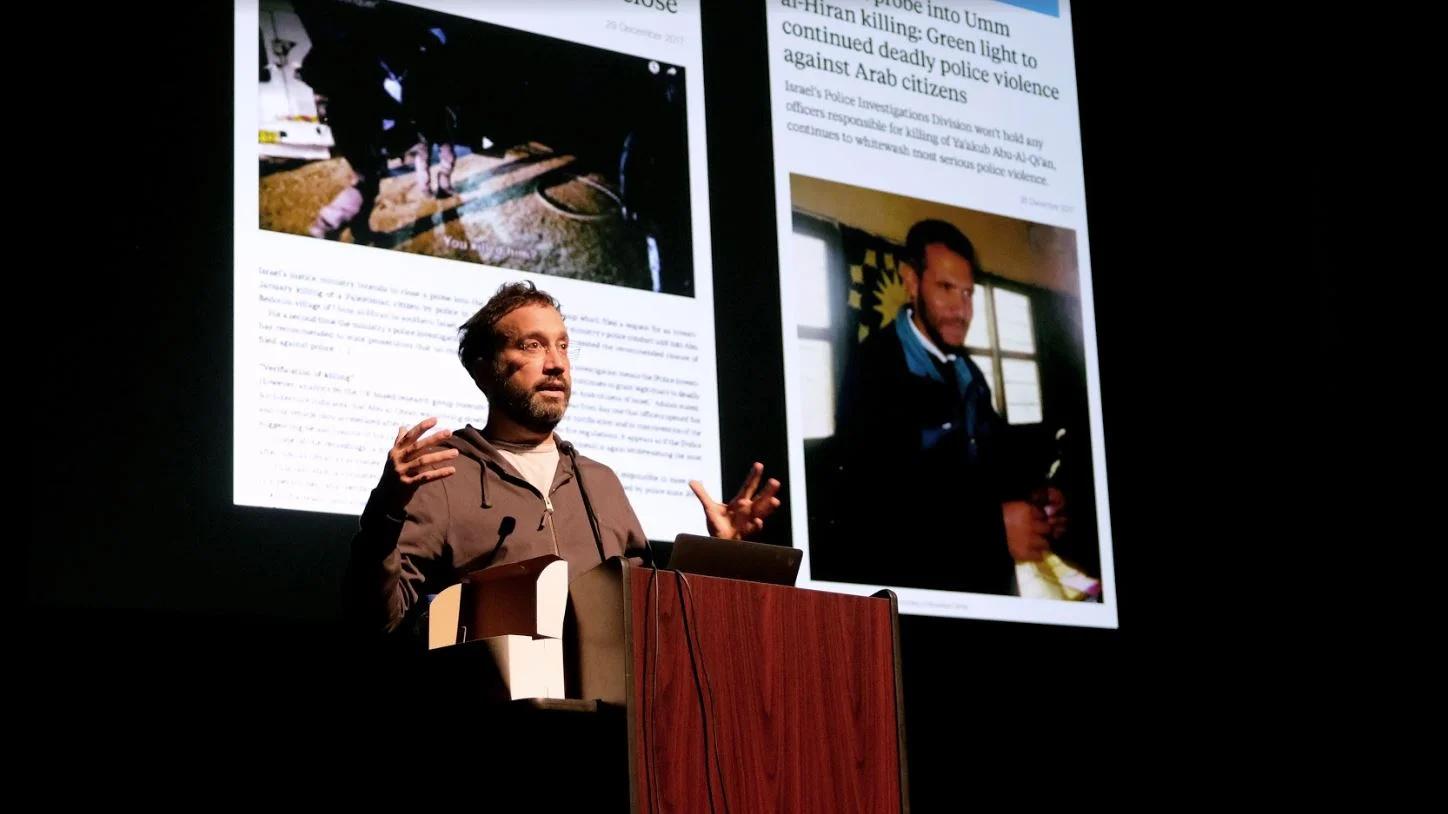Eyal Weizman, professor of Visual and Spatial Cultures at Goldsmiths, University of London and director of Forensic Architecture, shared his work with students, faculty, and guests at Kresge Theatre on Tuesday, 9 October 2018. Photo by Christina Brown.
By Evan Lehner
On Tuesday 9 October, the School of Architecture and larger CMU community convened in Kresge Theatre to welcome Eyal Weizman, the fourth lecturer of this year’s Fall Lecture Series. Weizman, an Israeli born architect, is a professor of Visual and Spatial Cultures at Goldsmiths, University of London and director of Forensic Architecture. Deftly towing the line between law and art, Forensic Architecture certainly strays away from what might be considered the standard architecture firm. The group, consisting of 25 multidisciplinary professionals, seeks to use mediums of architecture to expose human rights infringements committed by state and government actors.
Being from the Middle East, Weizman is no stranger to the violence that routinely grips the region. He realized that his passion and talent for architecture could be applied to a legal vernacular. He then founded Forensic Architecture to, “take [the] toolbox of an architect, the conceptual and technological, and use it as a lens that other practices could not see through. Turn architecture into an optics to look at and intervene in the world.” The firm started to receive numerous jobs when they realized how important architecture is as an analytical device, yet how rarely the public used such devices as substantive evidence. Since governments often control the account of what may or may not have happened during a war or operation, Forensic Architecture serves as a voice for those who do not have one. Consequently, Forensic Architecture has and never will accept a commission from a state entity.
Weizman began the lecture by recounting a covert police operation in Israel in which a civilian man was killed and then immediately labeled by the state media as a terrorist. Yet through painstaking efforts, Forensic Architecture was able to reconstruct the exact moment of the man’s death. Key to such an investigation, and many others undertaken by Forensic Architecture, is the Architectural Image Complex (AIC). The AIC is a computer program developed by Weizman and his team that not only models exactly the scene of the incident using Rhinoceros, but can stitch together photos, videos, and audio and locate them in the digital model as if they were being viewed in real time. The digital, as well as on site work, eventually revealed that the police had killed an innocent man.
Throughout the duration of the lecture, Weizman captivated the theatre as he recounted numerous commissions that involved piecing together the details of torturing in prisons in Syria and Cameroon, artillery strikes on Damascus, and an assassination in Germany. All cases eventually revealed the fault of the governments playing a role.
Recently, however, Forensic Architecture’s work has actually taken on another position, in the world of art. A piece titled Counter Investigations, detailing an assassination in Germany, was recently installed in the London Institute of Contemporary Art. While Weizman considers it a great honor for him and his firm to be recognized in multiple medias, he reminds that, “the aim of each project is to serve the stakeholders…in the best way.” Although his firm is rising in notoriety, so too do the risks of working against such powerful actors. “Some of us have been interrogated, members of our team have been stopped and arrested,” recounts Weizman. Even so, he and his team have no plans of stopping their work as long as there are state injustices that remain largely unquestioned and uncontested.
Evan Lehner is a third-year Bachelor of Architecture student in the Carnegie Mellon University School of Architecture.

